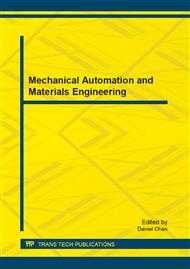p.771
p.775
p.780
p.785
p.790
p.794
p.799
p.804
p.809
Solutions and Experimental Verification of Recycling of Micaboard Leftover Materials
Abstract:
For the abroad use of talc paper plate in electric industry, the production of man-made talc paper plate is increasing. The problem following is that process brings too much unrecycle talc paper plate leftover materials when the talc paper plate is cut out and molding. Those leftover materials always be abandoned as crab. It is not only environment pollution but also a waste of our resources. Our research wants to find a measure to make the talc paper plate leftover materials into pieces so as to be used again and realize the new clean production craft of man-made mica paper plate.
Info:
Periodical:
Pages:
790-793
Citation:
Online since:
August 2013
Authors:
Keywords:
Price:
Сopyright:
© 2013 Trans Tech Publications Ltd. All Rights Reserved
Share:
Citation:


